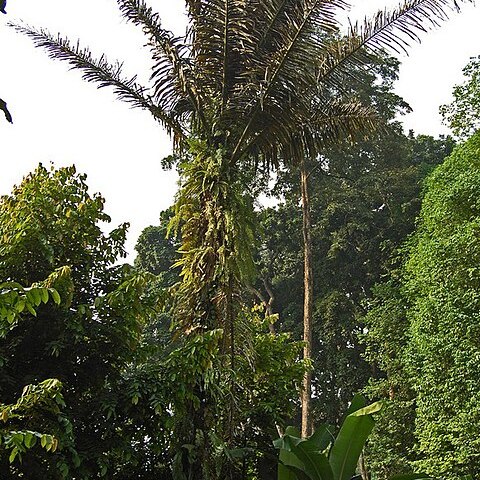Solitary (not in Australia) or clustering, small to large, monoecious, unarmed, hapaxanthic or pleonanthic (not in Australia) palms. Leaves imparipinnate with persistent fibrous bases; petiole absent or short (not in Australia), or long. Pinnae induplicate, inserted in 2 planes, apically praemorse, covered with grey indumentum on adaxial surface. Inflorescence interfoliar or rarely infrafoliar (not in Australia), paniculate, branched 1 or 2 orders; prophyll inconspicuous; peduncular bracts several, conspicuous, covered with dense indumentum; peduncle usually short; rachis usually longer than peduncle; rachillae erect or pendulous. Flowers in triads spirally arranged throughout. Staminate flower with valvate petals, coriaceous; stamens many; filaments short; anthers elongate, connective apically pointed; pistillode absent. Pistillate flower globose; petals coriaceous, imbricate; staminodes 3; ovary globose; stigmas 3; ovules hemianatropous. Fruit globose to ellipsoid (not in Australia); stigmatic remains apical; epicarp smooth; mesocarp fleshy with irritant crystals; endocarp not differentiated. Seeds 1–3, basally attached; embryo lateral. Eophyll bifid. [See also Du Puy & Telford (1993: 430–431).]

